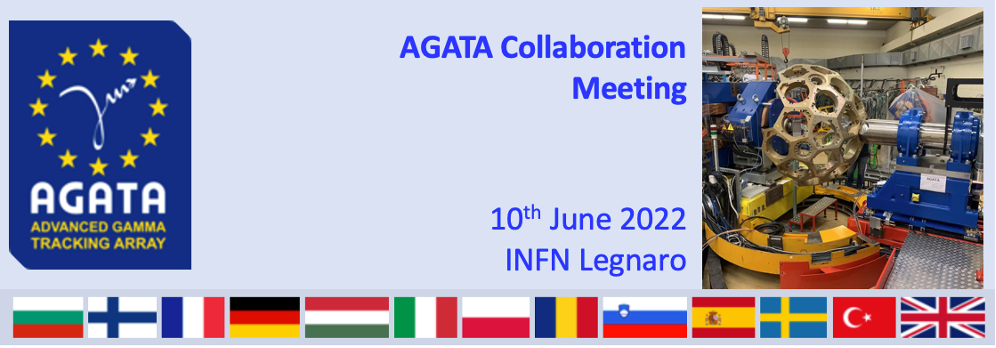Speaker
Description
The neutron-rich nuclei beyond Z=28 and N=50 shell closures present a rich variety of collective effects, such as shape coexistence found in 78Ni [1,2]. In germanium isotopes, an onset of triaxial deformation with filling of the s1/2 and d5/2 neutron orbitals has been reported [3-5]. One proton heavier, the arsenic (Z=33) nuclei are expected to manifest a similar structure, with the onset of collectivity beyond N=50. The quantification of deformation over the region of Ge, As and Se chains may be an important feature to connect with r-process nucleosynthesis scenarios, as these nuclei lie in the path of the r-process flow.
The exotic arsenic isotopes between 83As and 87As (N=50 to 54) were populated in the inverse-kinematic fusion-fission reaction 238U+9Be (6.2 MeV/u) in the experiment performed in GANIL. The AGATA array composed of 24 HPGe crystals was coupled to the VAMOS spectrometer placed at 28° to detect the most exotic light fragments, in order to study the isotopes beyond N=50 in the 78Ni region. The previously existing information about the level schemes of these exotic species is scares. In this talk the extended level schemes of 83As and 85As will be presented, along with the first suggested level scheme of 87As. The data are interpreted in terms of the state-of-the-art LSSM calculations, pseudo-SU3 symmetries and the beyond-mean-field calculations with the novel DNO-SM method. The comparison points to the prolate deformation of the 85As and 87As ground states and confirms the presence of triaxiality and gamma-softness in this region.
[1] R. Taniuchi et al., Nature 569, 53–58 (2019)
[2] F. Nowacki et al., Phys. Rev. Lett. 117, 272501 (2016)
[3] M. Lettmann et al., Phys. Rev. C 96, 011301 (R) (2017)
[4] M. Lebois et al., Phys. Rev. C 80, 044308 (2009)
[5] K. Sieja et al., Phys. Rev. C 88, 034327 (2013)

